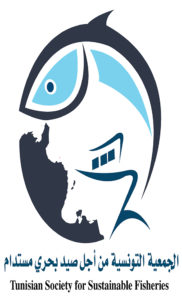Editorial charter of the website of the Tunisian association for sustainable fishing.
Because we don’t write for the web, as we do for paper!
The purpose of this charter is to formalize the rules of ethics, content management and graphic line that publishers must have in order to integrate harmoniously into the association’s website. It defines the respectful and responsible behavior that everyone undertakes to adopt when posting information on the web.
Each editor is the editorial manager of the documents he publishes. In this context, it undertakes:
at. To post only reliable, verified and official information;
b. To ensure that its pages comply with the legislation in force in terms of copyright for texts and photos, information security, respect for private life, freedom of expression.
vs. Not to open its pages to advertisements or information likely to harm the image of the observatory. The person in charge will refer to the prescriptions decided by the observatory as mentioned below:
d. To update or withdraw its pages in the event of a justified complaint. This list is not exhaustive and compliance with the texts in force, even if not specifically mentioned here, is required.
The rules of web writing
For effective, well-organized content (semantically rich content, with short and rhythmic sentences and concise and precise words, etc.) and finally interactive (integration of internal and external links). •Respect the quality and length of content to be read and understood quickly:
•An informative, eye-catching title that incorporates key words. 10 words max.
•Useful, concise headings that incorporate key words. 10 words max
•1 idea per paragraph: facilitate reading by leaps and bounds, without following the flow of the article.
•sentences of 15 to 20 words maximum, because you don’t retain more words at a time!
•rhythmic sentences: nominative, verbal, exclamatory, interrogative, always in the active form, because it’s shorter! Forget relative. When we treat several subjects at the same time, we lose the reader.
The length of your articles
For content with added value and also appreciated by Google, forget articles of less than 300 words. Do not hesitate to opt for lengths of 500 to 800 words… Even 1500 words (depending on your subjects and your targets).
It’s long ? Not , if you prioritize your information well !
THE COMPOSITION OF AN ARTICLE
Title
The title of the article is the major element of the first level of reading. It catches the eye and sets the tone.
A good title and it is almost a guarantee that the reader will read the article. They already tell a story. They should therefore not be descriptive but catchy. The title is not capitalized. A picture
Hat
The body of the article is preceded by a hat whose purpose is to attract attention and arouse curiosity. The chapeau is written in a single paragraph, in bold and left-aligned.
Paragraphs
The text is divided into 2 or 3 paragraphs maximum with one idea per paragraph or one story element per paragraph. Paragraphs are not linked by headings.
Editorial signature
Each article is signed by its author in the form of a nickname or his own name.
Drawing
Each editor is in charge of the illustrations (photos) associated with the writing of his article and must therefore provide at least 1 image per article. 2 options:
– take photos yourself with the written consent of the people appearing in the image (pay attention to the rules of image rights, especially for recognizable people within a group).
– ask for copyright-free photos (especially for shows or exhibitions from communication officers)
Each image is associated with a caption (60 to 80 characters maximum). The caption picks up a short phrase or phrase that appears in the body of the post. The photo credit must be mentioned as follows: title of the image (source / license – name of the photographer).
Sending / publishing your articles and their updates
By e-mail Attached file entered in Word (PC or Mac); the file has your name. Without forgetting the attached photos in the appropriate format (jpg, png..)
Sending items:
– To the administrator: contact.tssf@gmail.com


